Lush greenery crawling up the walls expose us, city dwellers, to Nature and organic materials, resulting in a profoundly positive effect. If you are concerned by the rumour that ivy and other climbing plants can ruin the façade of your home, consider growing vines up a screen or metal armature placed in front of an exterior wall. We have selected a few of fascinating exteriors brought alive with foliage.
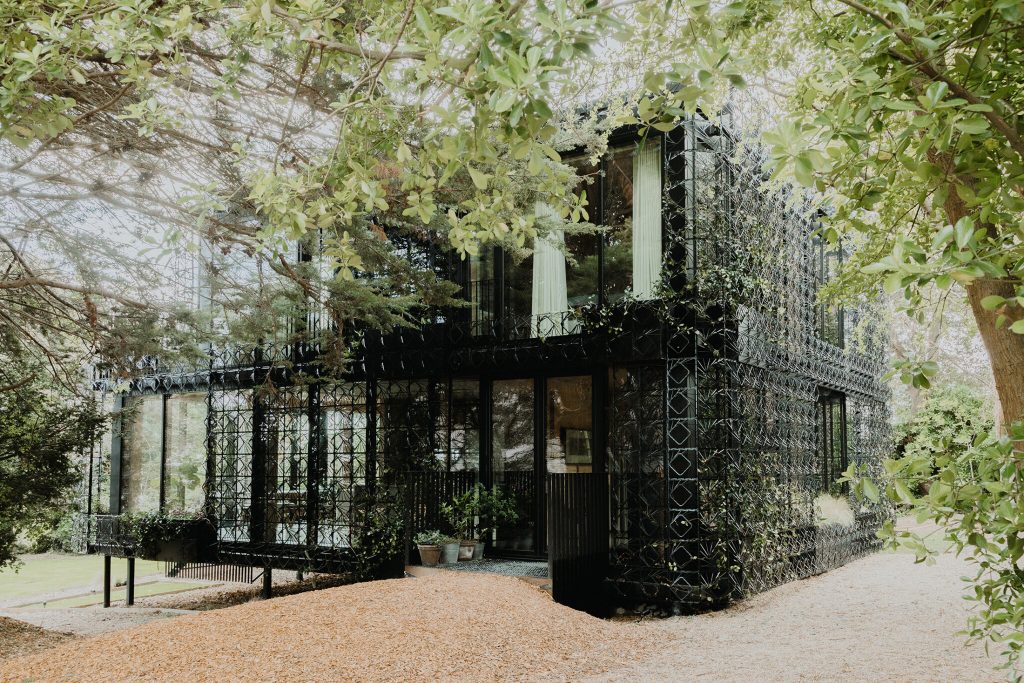
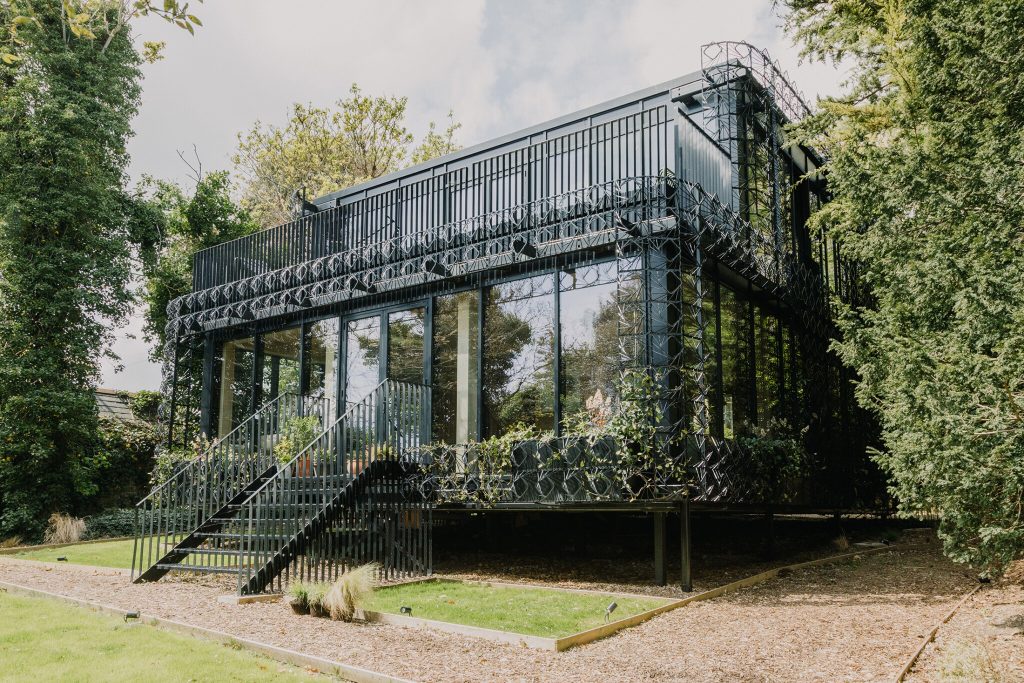
Woven house by Giles Miller Studio (also header image)
The external skin of the Woven house created by English architecture practice Giles Miller Studio takes shape as an intricate steel latticework for climbing plants such as jasmine and clematis.
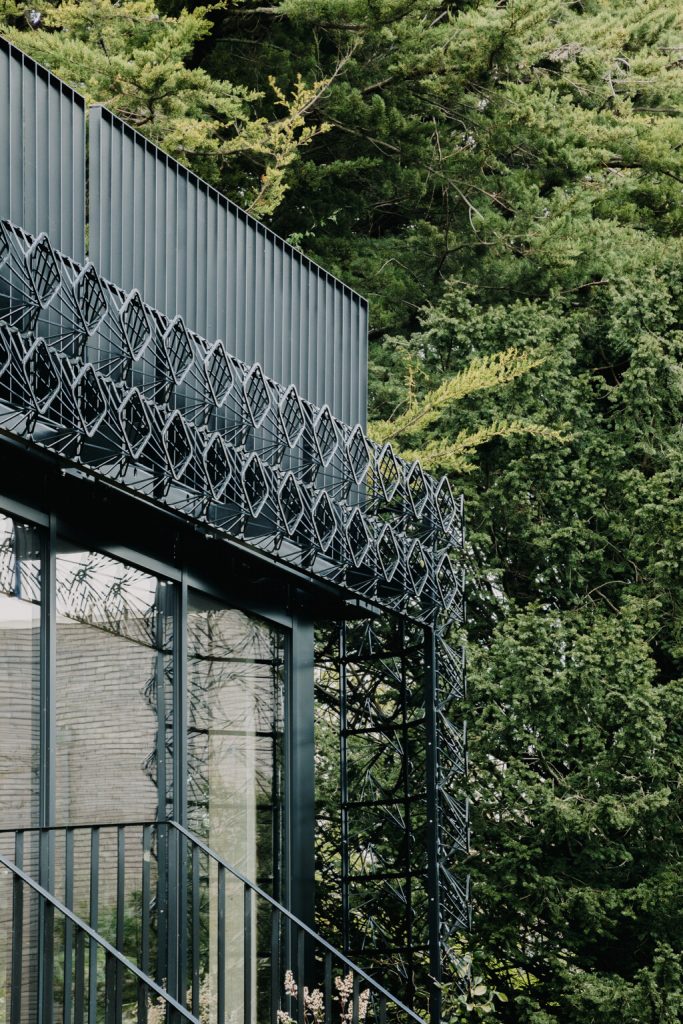

Woven house by Giles Miller Studio
The architects have taken inspiration from the circular patterns of twisted rattan weave and used recycled ABS modules crafted from electronic component housing waste to add a three-dimensional relief to the composition. The depth of these modules introduces a welcoming surface with which the climbing plants can intertwine.

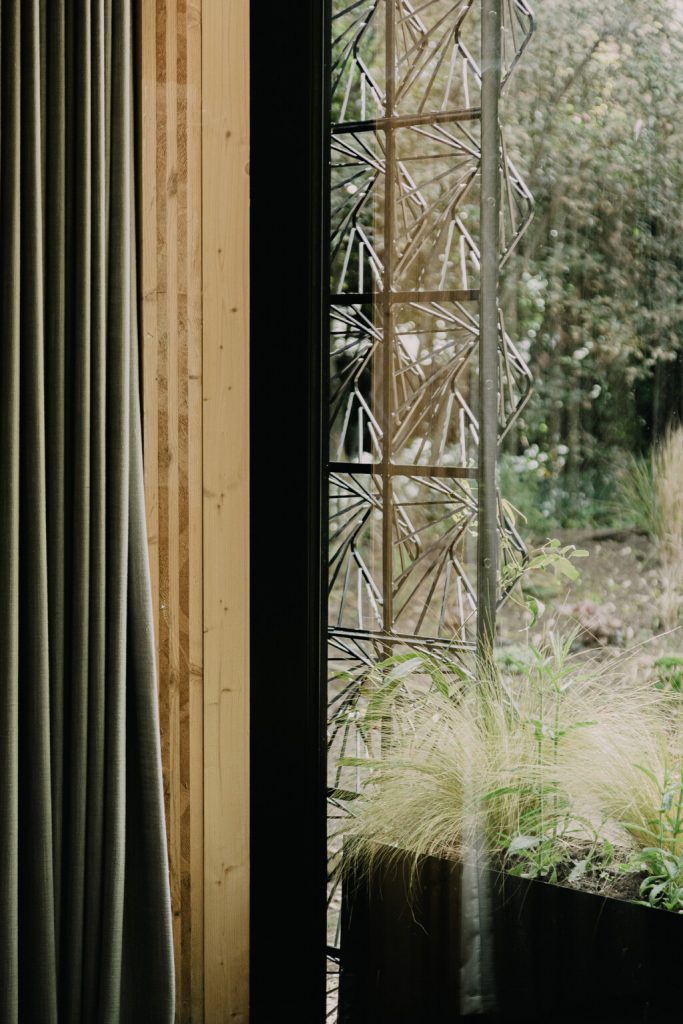
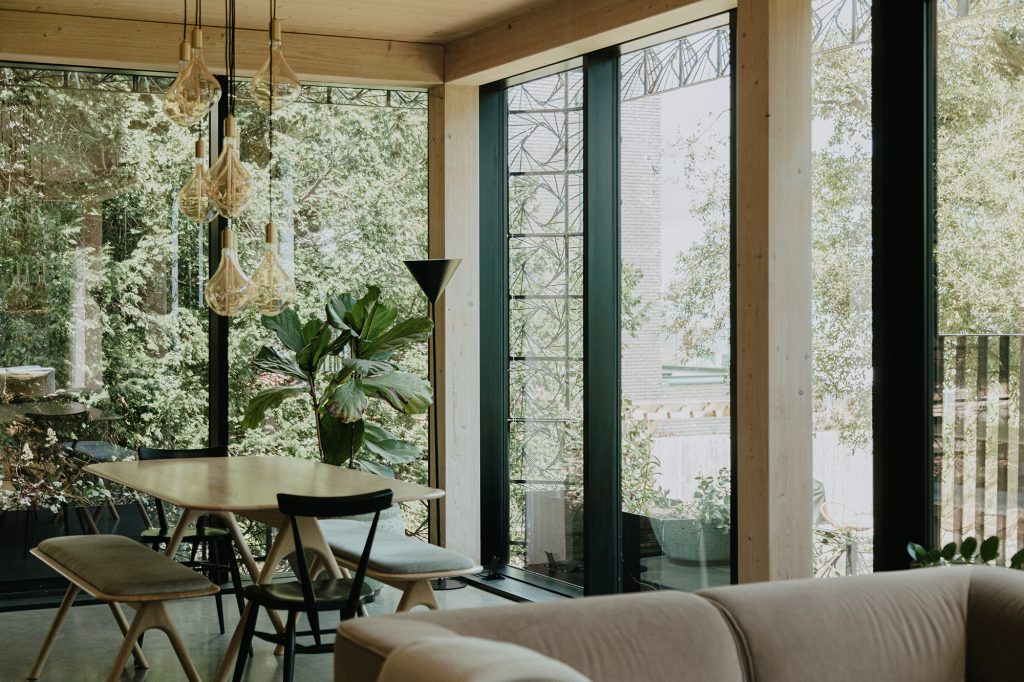
Woven house by Giles Miller Studio
On the one hand, this artwork of a façade lets the dwelling integrate with the natural surroundings, inviting nature to gracefully extend from the outside to the interior of the building. On the other hand, it provides occupants with natural shading, allowing for the use of large floor-to-ceiling glass windows.

Nevogilde house by Anarchlab
Similarly, climbing plants will gradually cover the screen of iron bars that surrounds Nevogilde house in Porto, Portugal, which has been completed by local studio Anarchlab. The studio turned to the solution to re-create the tranquility and strong connection with nature of the old stone house overlooking a pedestrianised square that used to occupy the plot.
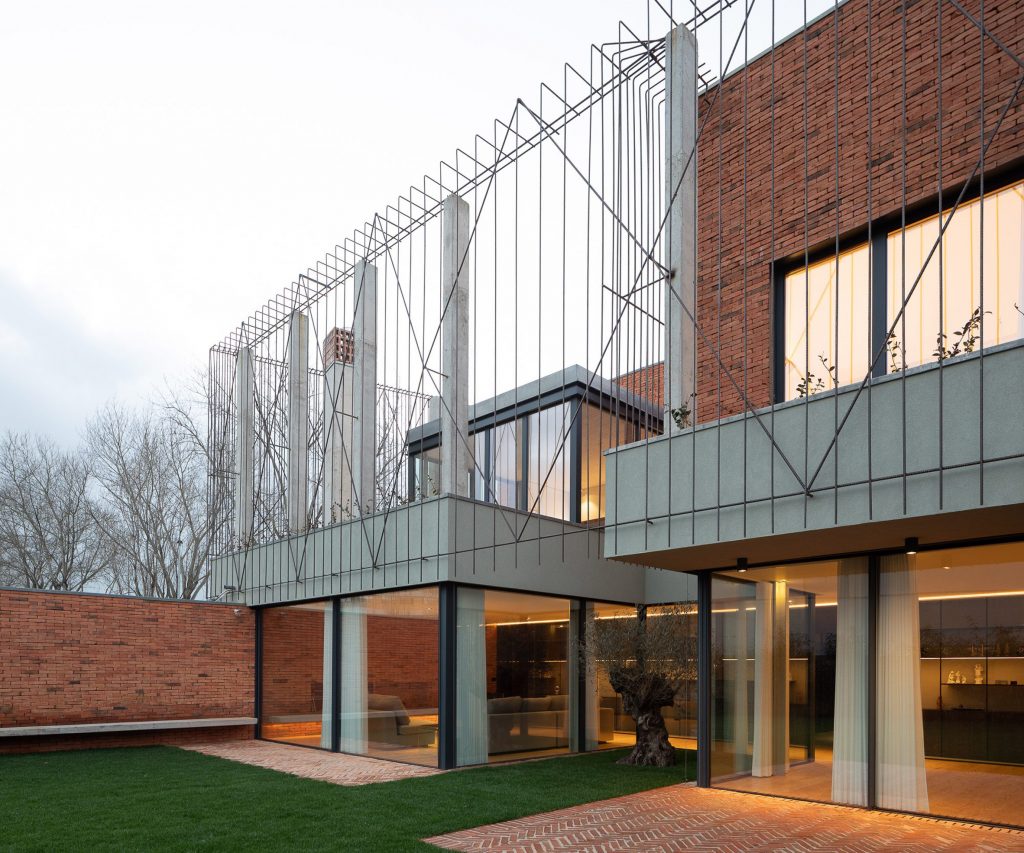
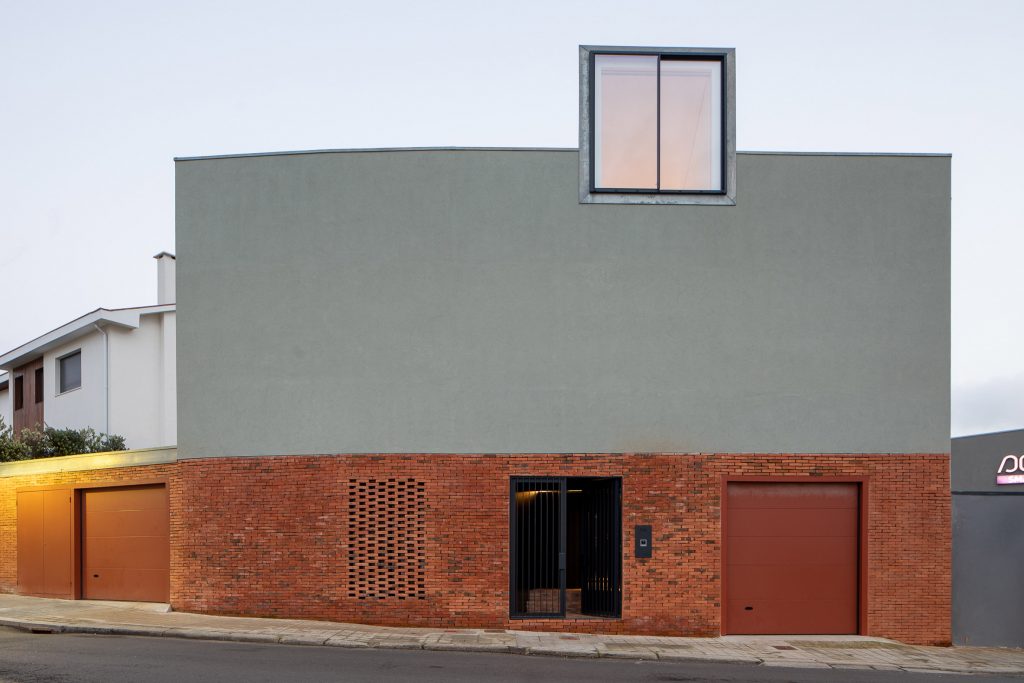
Nevogilde house by Anarchlab
The once quite square is now a busy traffic junction, which is why the architects decided to introduce a closed façade to the north and creating a fully-glazed, U-shaped ground floor to the south embracing the entire length of a large garden.
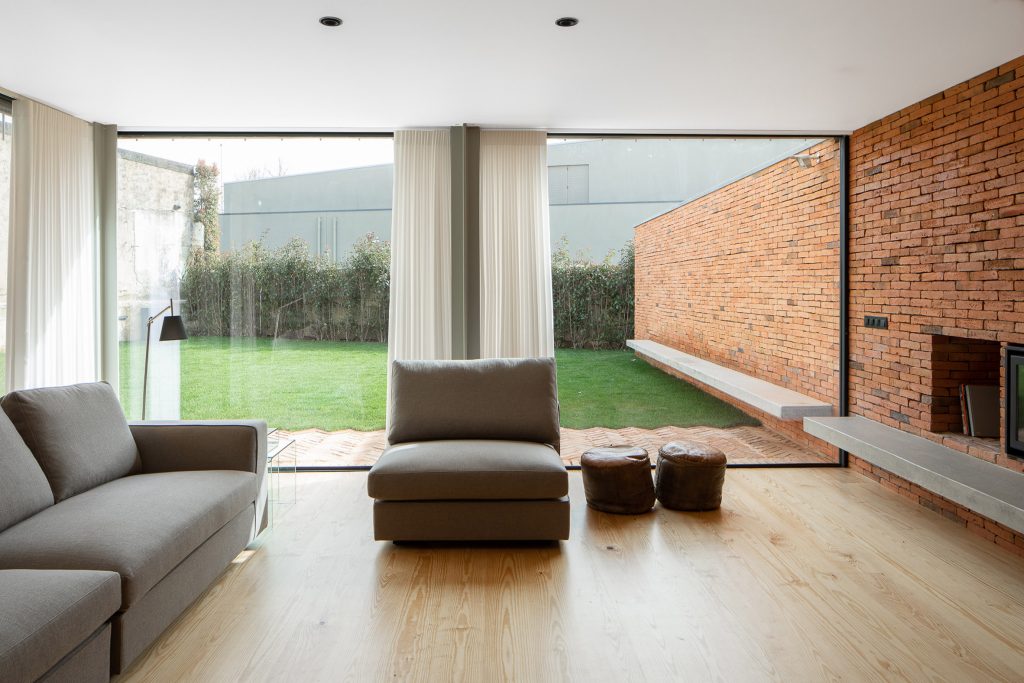
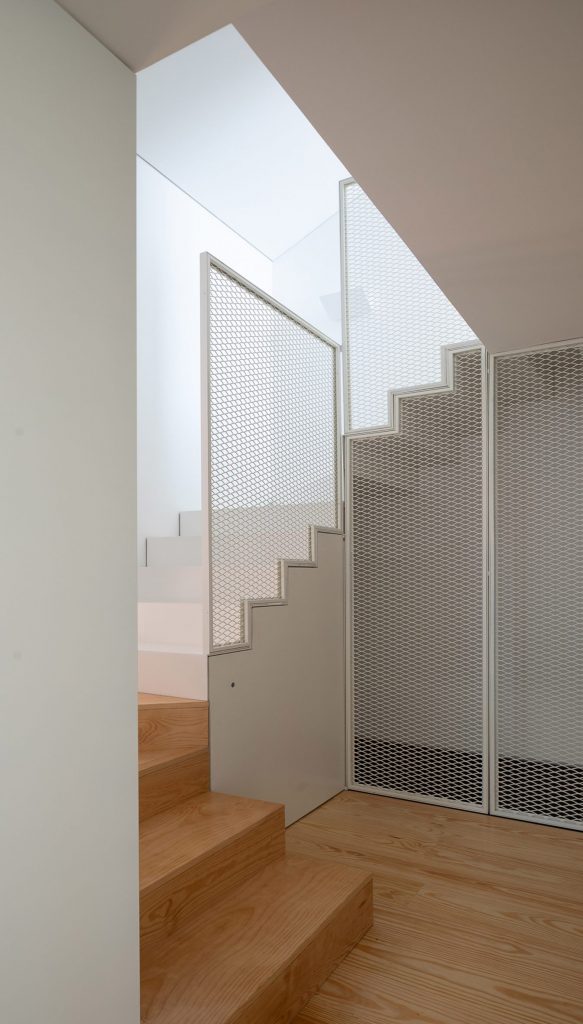
Nevogilde house by Anarchlab
At the centre of the home, there is a cut-out that is a planted with a tree. On both sides of the cut-out, the first-floor bedrooms are set back slightly to create two external terraces protected by a huge structure of delicate vertical lines of ribbed iron. This screen will eventually be covered with climbing plants and serve the basis for a vertical garden across the south-facing façade to help conceal the sleeping spaces.
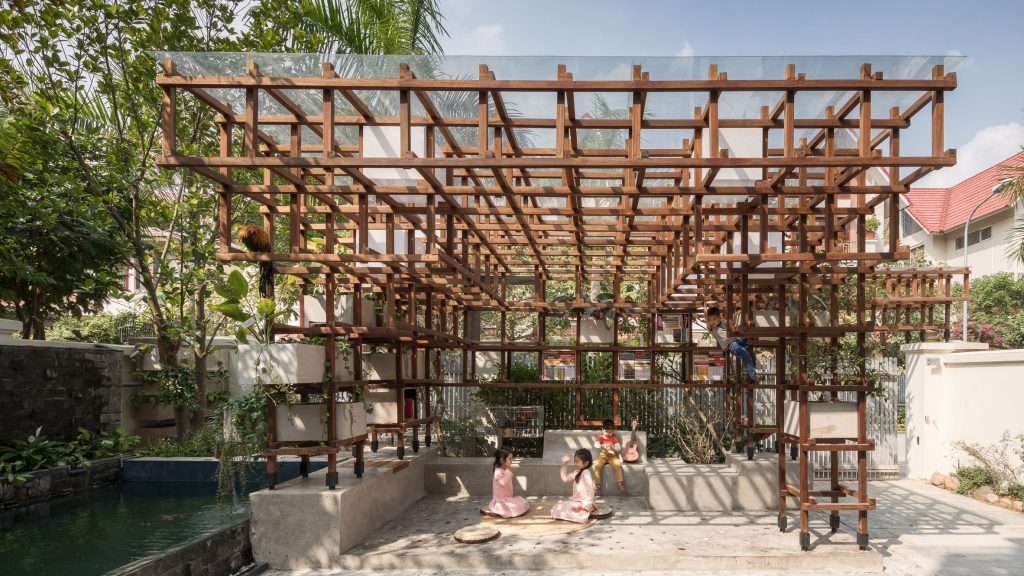
VAC Library by Farming Architects
Vietnamese studio Farming Architects has turned to aquaponics technology to introduce a green intervention for a hybrid of a library and city farm in Hanoi, Vietnam. VAC Library comprises a large wooden climbing frame that uses solar-powered hydroponics to keep vegetables, with an adjacent pond with koi carp, crossed via a series of concrete stepping-stones, and several chicken cages sitting in the rear.
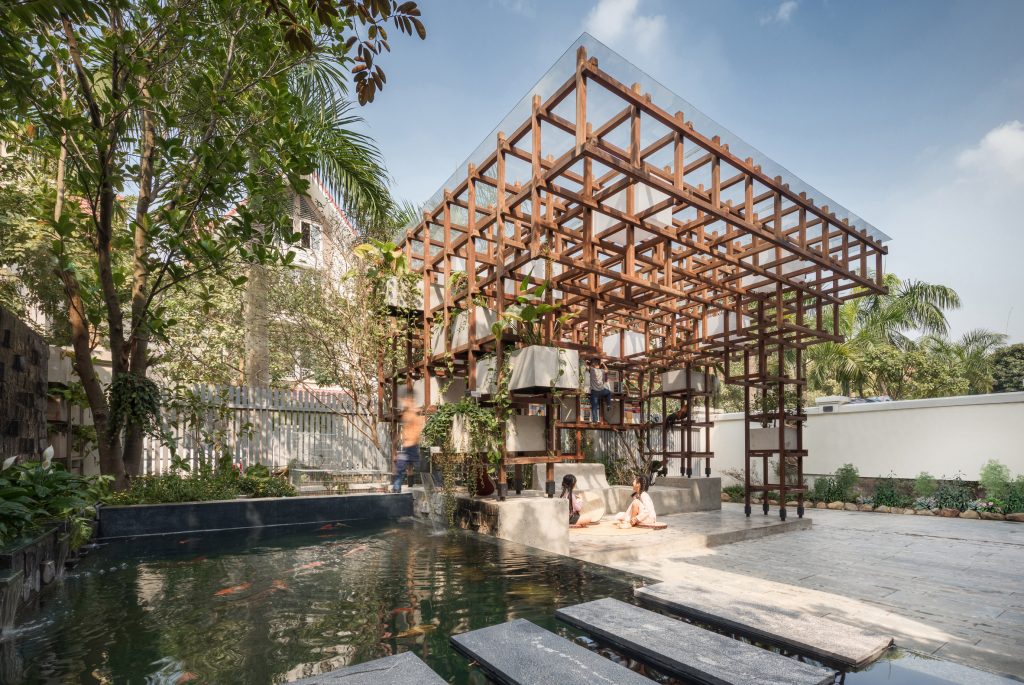
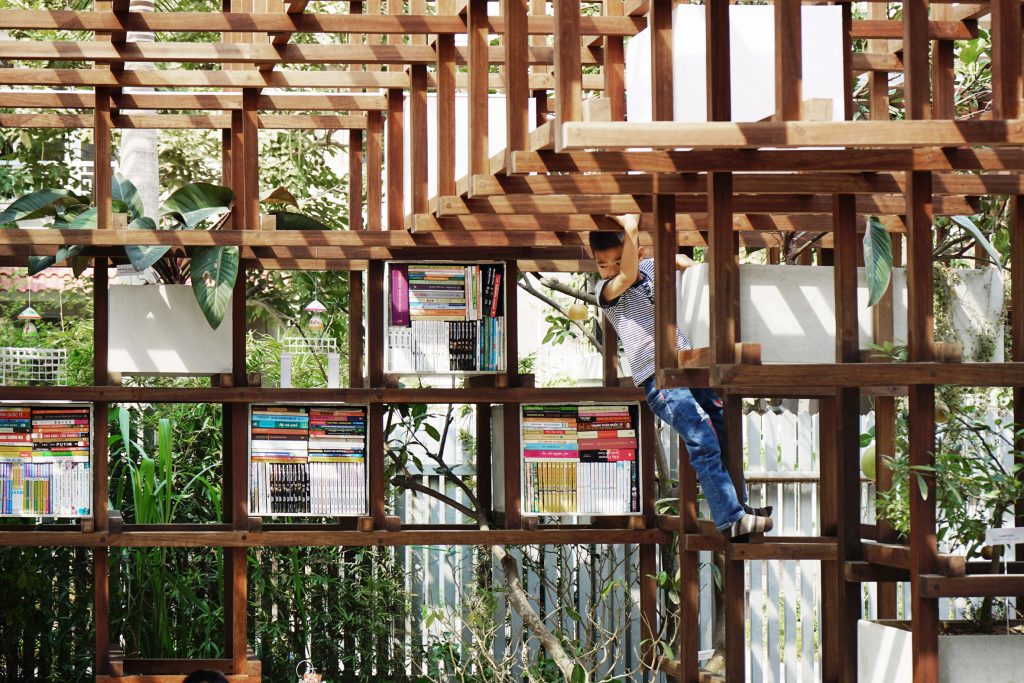
VAC Library by Farming Architects
The project, whose name is a smart combination of three Vietnamese words: Vườn (garden), Ao (pond) and Chuồng (cage), seeks to teach children to learn about self-sustaining ecosystems. The cyclical aquaponics system uses wastewater from the ponds as a nutrient-rich resource for plants. In turn, plants help purify water that is then returned to the fishponds. Chickens also contribute to the library’s ecosystem, providing manure to fertilise the vegetables.
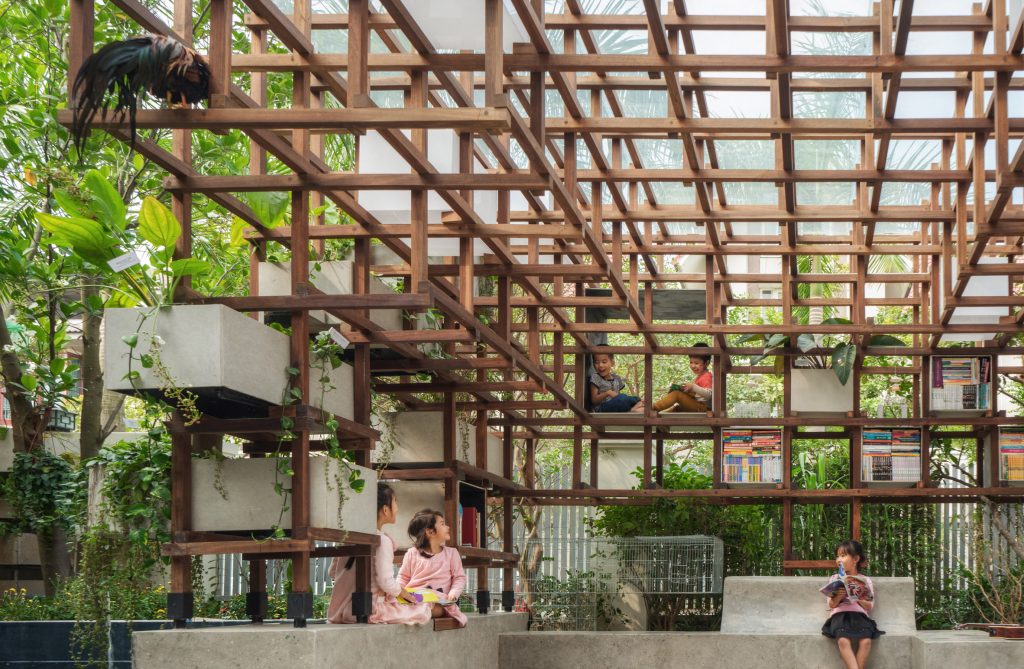

VAC Library by Farming Architects
Various elements are slotted into the gaps of the structure’s wooden beams, such as acrylic boxes housing lights, planters for growing vegetables, and shelving units containing children’s books. The modular wooden grid is designed to be adaptable to a range of different urban sites, while solar panels on the roof make the whole system self-sufficient.